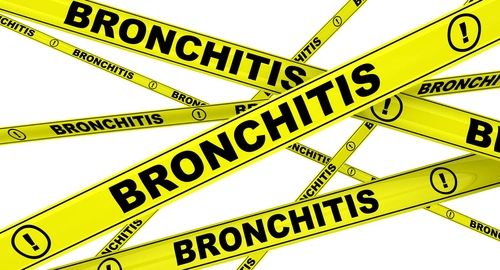ED Coding and Reimbursement Alert
I.D. Debridement Type, Then Perform Code Search
Hint: There are codes specifically for debridement with fracture care. In the summer, patients might be reporting to the ED with some scrapes and cuts that go beyond the Band-Aid and kiss from mom remedy. Injuries that require debridement can occur at any time, but particularly in the summer, when people are wearing shorts and T-shirts and generally being more active outdoors. Just in time for summer, HEALTHCON 2022 hosted a session from Jennifer McNamara, CPC, CRC, CPC-I, CGSC, COPC, AAPC approved instructor and professional recruiter at Ozark Coding Alliance LLC in Bentonville, Arkansas. Here’s what she had to say about various debridements and how to code them. Glean This Info From Notes First First things first: Before you start your code selection, McNamara recommended you review the report and ask yourself: Then, you’re ready to move onto the next phase of debridement coding. Excisional Debridement Often Involves Dirt/Debris One method your provider might employ would be excisional debridement, which is a “method for removing dead tissue, dirt, or debris from infected skin, burn, or wound,” McNamara explained. The first set of excisional debridement codes are based on percent of body surface area: 11000 (Debridement of extensive eczematous or infected skin; up to 10% of body surface) and +11001 (…each additional 10% of the body surface, or part thereof (List separately in addition to code for primary procedure)). The other set of codes you’ll choose from are 11004 (Debridement of skin, subcutaneous tissue, muscle and fascia for necrotizing soft tissue infection; external genitalia and perineum) through 11006 (Debridement of skin, subcutaneous tissue, muscle and fascia for necrotizing soft tissue infection; external genitalia, perineum and abdominal wall, with or without fascial closure). Choose these codes when the debridement involves necrotizing soft tissue. Report 11004 through 11006 based on area of body being debrided, McNamara reminded. Example: A diabetic patient presents with an 8 percent body surface area infected area covering a large portion of the right thigh. The physician debrides the infected skin. Report 11000 for this encounter. Use These Codes for Debridement With Fracture Be careful on fracture care claims, as they can be accompanied by a debridement, McNamara said. You’ll report these debridements with 11010 (Debridement including removal of foreign material at the site of an open fracture and/or an open dislocation (eg, excisional debridement); skin and subcutaneous tissues) through 11012 (Debridement including removal of foreign material at the site of an open fracture and/or an open dislocation (eg, excisional debridement); skin, subcutaneous tissue, muscle fascia, muscle, and bone) Example: Encounter notes indicate “open fracture was debrided of all necrotic tissue and debris down to bone.” For this encounter, you’d report 11012 separately from any fracture care codes, McNamara said. You won’t need a modifier for 11012, either, as 11010 through 11012 aren’t bundled into fracture care codes, she confirmed. Lack of Sequential Codes Marks These Debridements One code set that can get confusing fast is the subcutaneous tissue/muscle/fascia debridements. These types of debridements are often employed on infections, wounds, and chronic ulcers, said McNamara. The code order is a bit wonky, as illustrated by the code set as it appears in CPT® 2022: #Resequencing alert: Sometimes, CPT® adds codes to a group that are out of numerical sequence. CPT® does this when a new code is added to a family of codes, but a sequential number is unavailable. This concept, called resequencing, is marked by a # in the left margin next to the code entry in your CPT® code book. Resequencing is illustrated well by this code set, as the add-on codes for debridement were added after CPT® had used 11042, 11043, and 11044. Once you get past the resequencing confusion, you’re free to focus on the specifics of the encounter. Example: Your physician debrides 30 sq cm involving the epidermis and dermis on a patient’s arm. Report both 11042 and +11045 to account for the entire debrided area.

Related Articles
ED Coding and Reimbursement Alert
- Debridements:
I.D. Debridement Type, Then Perform Code Search
Hint: There are codes specifically for debridement with fracture care. In the summer, patients might [...] - Injections:
Target Joint Size for Sure Shot Coding
Do you know what separates small/intermediate/ major joints? When patients report to the ED for [...] - Modifier Madness:
Partial Service Coding Depends on 26, 54
Do you know when to use professional component modifier? There are times when your physician [...] - You Be the Coder:
Alternate Terms and Nonspecific Diagnoses
Question: Encounter notes indicate that the provider treated a patient with “blood-stained sputum.” I cannot find [...] - Reader Questions:
Eye Conjunctivitis Dx Carefully
Question: A patient presents with eye irritation and discharge. After a level-three ED evaluation and management [...] - Reader Questions:
Contrast Smarts Will Keep Your MRI Claim From Coming Back
Question: The provider performed an ED evaluation and management (E/M) service for a patient who was [...] - Reader Questions:
Target Muscles on Trigger Point Shots
Question: If the ED physician performs trigger point injections (TPIs) to alleviate pain, how do I [...]




